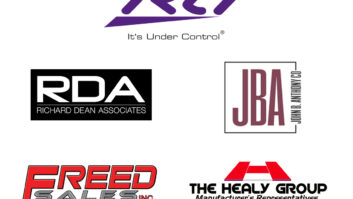Convergence, flat-panel displays and greater broadband access is the volatile mix that will fuel industry growth in 2004, top CE dealers said at a CES Retail Power Panel.
The discussion, moderated by CEA president Gary Shapiro, featured Alan McCollough, chairman/president/CEO of Circuit City; Brad Anderson, vice chairman/CEO of Best Buy; Jeff Stone, president/CEO of Tweeter Home Entertainment Group; Len Roberts, chairman/CEO of RadioShack; and Larry Mondry, recently appointed CEO of CompUSA.
Looking back on the past 12 months, Anderson described 2003 as a watershed year that was one of the strongest, if not the strongest, in Best Buy history, thanks to robust growth in “anything digital.”
Others described 2003 as a transitional year for their companies and the industry, as retailers prepare their assortments and stores for the long-anticipated convergence of entertainment and IT-type products. The coming convergence, they agreed, is evidenced by the recent entry of PC direct-sellers Dell and Gateway into the A/V arena.
“It proves that a convergent future is at our doorstep,” said Stone, who noted that today’s children are the first generation to be born into a digital world. “We grew up in an analog world. It’s going to be very different.”
According to McCollough, specialty CE retailers should be prepared for even greater competition from new A/V entrants. “We should expect to see more and more folks looking at this business and trying to figure out ways to integrate it,” he said.
“I’m kinda used to it,” said Mondry, whose CompUSA stores have long carried products from both camps, and recently upped their A/V ante with dedicated in-store shops. “But hats off to Gateway for having the No. 1 selling plasma display,” he said.
Anderson described the new wave of PC players as “dis-intermediaries” who are creating a fundamental change in traditional distribution. “It will make life difficult for us,” he acknowledged, although he also welcomed the challenge as a positive driver for his business.
So too for Wal-Mart, which has “done a huge favor for all of us by driving down cost,” Anderson said. Indeed, the discounter’s legendary supply-chain management is serving as “an inspiration” for Tweeter, noted Stone, as it works to achieve greater operational efficiencies over the next six to nine months. “They do a better job of taking costs out than anybody,” he said.
One area where retailers — and vendors — have dropped the ball is in fashion and product styling, the panel conceded. The blunder has cost the industry the female demographic, and may have contributed to the precipitous decline in the audio sales.
“Big speakers don’t work any more in a thin TV world,” said Stone, who described flat-panel displays as a fashion business that speaks to women. “The wives are saying ‘Get rid of that big black box in the living room.’ It’s a challenge for us because retail is male dominated.”
Anderson acknowledged that his company was overly focused on technology to the exclusion of styling considerations. “The industry and Best Buy haven’t responded to changes in the fashion world,” he said.
Another under-addressed area, according to RadioShack’s Roberts, is the Internet. “We’re still underestimating the impact of broadband,” he said, citing the estimated 30 million wired homes today and the projected 50 million by 2007. “We will find ourselves being Internet-centric. We’ll leverage our stores with the Internet, which will generate interest and provide real education, and use the stores to demonstrate the products.”
Looking ahead, the participants were uniformly bullish on 2004 as the plethora of flat-panel displays, the arrival of convergence and a recovering economy create a compelling selling environment. “The industry is in the right place at the right time,” Mondry said.












